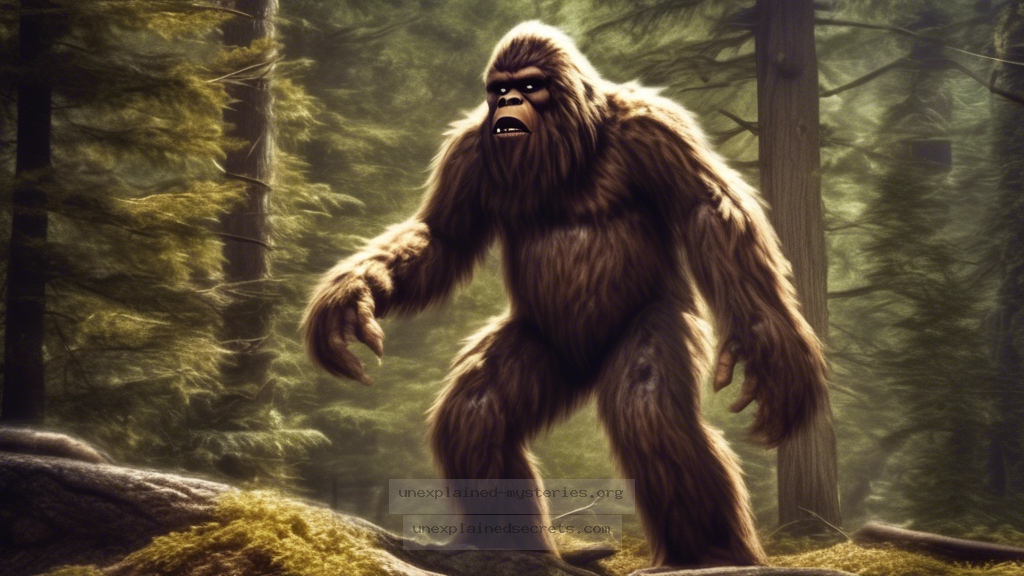What Are the Most Compelling Pieces of Evidence Supporting the Existence of Bigfoot?
What Are the Most Compelling Pieces of Evidence Supporting the Existence of Bigfoot?
The legend of Bigfoot, also known as Sasquatch, has captivated the imaginations of countless individuals for generations. This elusive creature is said to roam the dense forests of North America, leaving behind traces that have sparked intense debates among enthusiasts, skeptics, and researchers alike. But what are the most compelling pieces of evidence that support the existence of Bigfoot? This question is significant not only because it touches on the realms of cryptozoology and folklore, but it also raises questions about human perception, belief systems, and the mysteries of the natural world. In this post, we will explore various pieces of evidence, historical accounts, and ongoing debates surrounding the existence of this enigmatic creature.
Historical Context of Bigfoot Sightings
The concept of Bigfoot is not a modern phenomenon. Indigenous cultures across North America have long spoken of a giant, hairy creature that roams the woods. The term “Sasquatch” itself is derived from the Salish word “sásq’ets,” which refers to a being of great size. European settlers also documented encounters with tall, ape-like creatures in their travels, further embedding the legend into the folklore of the region. The first widely publicized sighting occurred in 1958 when a construction worker named Jerry Crew found large footprints near Bluff Creek, California. This incident spurred a wave of interest and investigation that continues to this day.
Types of Evidence Supporting Bigfoot’s Existence
Evidence supporting the existence of Bigfoot can be categorized into several types, including physical evidence, audio recordings, photographic evidence, and eyewitness accounts. Each type has its strengths and weaknesses, contributing to the ongoing debate surrounding the creature’s existence.
Physical Evidence: Footprints and Hair Samples
One of the most common forms of evidence comes in the form of footprints. Many researchers have documented large, human-like footprints in remote areas, measuring up to 24 inches in length. In 1978, a team of researchers led by Dr. Grover Krantz analyzed plaster casts of these footprints, concluding that they exhibited unique characteristics that differentiate them from known animal tracks.
Additionally, alleged hair samples have been collected from locations where Bigfoot sightings occurred. A notable case is the hair sample collected by the BFRO (Bigfoot Field Researchers Organization) in 2000, which was sent for DNA analysis. The results were inconclusive, as the genetic material did not match any known species, leading to speculation about the creature’s origins.
Audio Evidence: The Sounds of the Unknown
Many enthusiasts report hearing strange calls or vocalizations in the woods, which they attribute to Bigfoot. The “Sierra Sounds” recorded in the 1970s by Ron Morehead in California is one of the most famous examples. The recordings feature a series of howls and whoops that have baffled experts, with some claiming they resemble the calls of known primates while others argue they are unlike anything documented before.
Photographic Evidence: The Patterson-Gimlin Film
Perhaps the most famous piece of evidence is the Patterson-Gimlin film, shot in 1967 by Roger Patterson and Bob Gimlin in Bluff Creek, California. The short film captures a figure walking through the woods that many believe to be a female Bigfoot. Despite extensive analysis and scrutiny, the film remains a subject of controversy, with some asserting it is authentic while others claim it is a hoax. The film’s grainy quality and the creature’s gait continue to fuel discussions about its legitimacy.
| Type of Evidence | Strengths | Weaknesses |
|---|---|---|
| Footprints | Physical trace of presence | Potential for hoaxes or misidentification |
| Hair Samples | Genetic analysis possible | Often inconclusive or matches known species |
| Audio Recordings | Captures sounds in natural habitat | Difficulty in authenticating origin |
| Photographic Evidence | Visual documentation | Can be easily fabricated or misinterpreted |
Core Theories Surrounding Bigfoot’s Habitat
Theories surrounding Bigfoot’s habitat often focus on its purported preference for remote, forested areas, where human presence is minimal. Many believe that these areas provide the necessary resources for a creature of its size, including food, water, and shelter. Biologists suggest that if such a creature exists, it would likely be a large primate that has adapted to living in these secluded environments.
Some researchers propose that Bigfoot may be a remnant population of Gigantopithecus, an extinct genus of large primates that lived in Asia. This theory posits that, over time, a small group may have migrated to North America, adapting to the environment and evolving separately from its ancestors. However, this theory has not been widely accepted due to the lack of fossil evidence to support such a migration.
Investigating Bigfoot: Best Practices
Investigating the existence of Bigfoot requires a combination of scientific rigor, critical thinking, and an open mind. Here are some best practices for those interested in exploring this mystery:
- Utilize technology: Employ audio recording devices, cameras, and drones to document evidence in the field.
- Collaborate with experts: Work alongside biologists, anthropologists, and wildlife specialists who can provide valuable insights.
- Keep a detailed log: Document all findings, including locations, time, and environmental conditions, to identify patterns.
- Remain skeptical: Approach evidence with a critical eye, being aware of the potential for misidentification and hoaxes.
Common Misconceptions About Bigfoot
The mystery of Bigfoot is rife with misconceptions, some of which hinder serious discourse on the subject. For instance, many people believe that all eyewitness accounts are fabricated or exaggerated. While some are indeed hoaxes, numerous reports come from credible witnesses, including hunters, park rangers, and law enforcement officials. These compelling testimonies often lend a degree of credibility to the ongoing investigation into Bigfoot’s existence.
Another common misconception is that Bigfoot is a solitary creature. While many sightings involve a single individual, anecdotal evidence suggests that these creatures may live in small family groups or clans. This behavior aligns with what is known about large primates, which often exhibit social structures.
Alternative Perspectives: Skepticism and Scientific Inquiry
While many enthusiasts passionately believe in the existence of Bigfoot, it is essential to consider the perspective of skeptics. Scientists often argue that there is insufficient evidence to support the existence of a large, undiscovered primate in North America. They cite the lack of biological remains, such as bones or feces, and point to the improbability of a species remaining undetected in an age of advanced technology and widespread exploration.
Moreover, skeptics argue that many supposed pieces of evidence, such as footprints or blurry photographs, can often be attributed to misidentifications of known animals or outright hoaxes. This skepticism has led to a call for more rigorous scientific investigation and the need for verifiable evidence to substantiate claims.
Future Developments in Bigfoot Research
As technology continues to advance, the future of Bigfoot research may benefit from innovative methods. For example, the use of environmental DNA (eDNA) analysis has emerged as a promising avenue. Researchers can collect samples from the environment, such as soil or water, to detect genetic material from animals living nearby. This method has been successfully used to identify rare species and could potentially provide insights into the existence of Bigfoot.
Additionally, the integration of machine learning and artificial intelligence could enhance the analysis of audio and visual evidence, allowing researchers to sift through large amounts of data for patterns that may have been overlooked. As interest in cryptozoology grows, so does the potential for new findings that could either confirm or debunk the legend of Bigfoot.
Conclusion: The Ongoing Mystery of Bigfoot
The question of whether Bigfoot exists remains one of the most intriguing mysteries of our time. With a wealth of anecdotal evidence, historical accounts, and ongoing research, the quest for the truth about Bigfoot is far from over. While skepticism is necessary for scientific inquiry, the passion and curiosity surrounding this phenomenon remind us of humanity’s enduring fascination with the unknown. As we continue to explore the forests and wilderness of North America, we may yet uncover the truth behind the legend of Bigfoot—a creature that occupies a unique space in the intersection of myth, science, and the human experience.
Other Articles
Recent Posts
- What Happened to Flight MH370? The Conspiracy Theories That Still Haunt Us
- What Secrets Lurk Within the Walls of the Infamous Trans-Allegheny Lunatic Asylum?
- What Evidence Supports the Existence of Bigfoot in the Pacific Northwest?
- What Happened to the Indus Valley Civilization? Unraveling the Mysteries of Ancient Urban Life
- Can Telepathy Be Scientifically Proven Through Laboratory Evidence?







